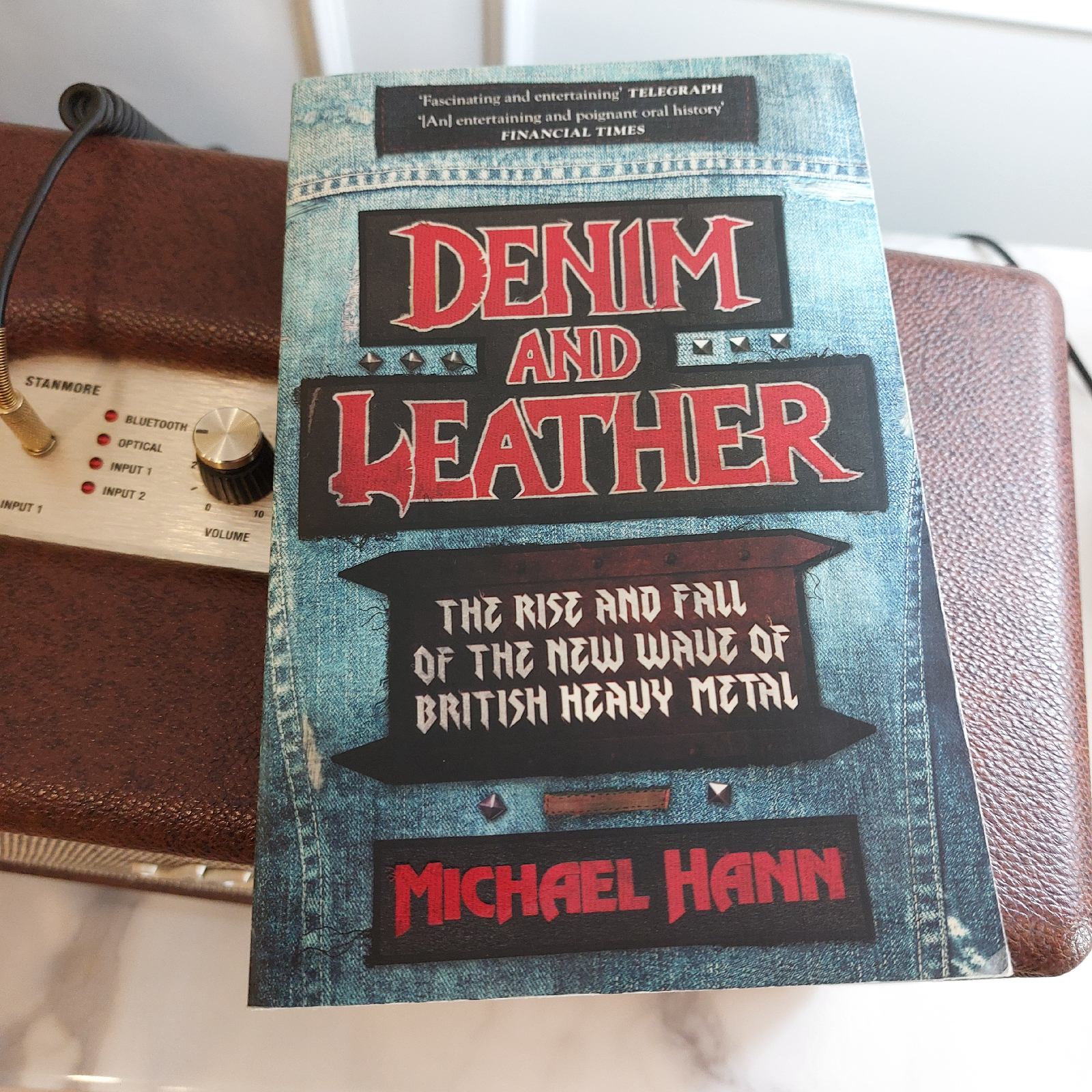In 1978, Heavy rock had a certain look and sound. Open chords rang out. Musicians might wear silk or Spandex. Kimonos were not unknown. But by 1983, things were different, and what we now call Heavy Metal was set. Denim or Biker jackets, leather trousers, studded wristbands, and palm-muted riffs. The music got faster and a group of fans dispersed in unfashionable towns had became a tribe. Michael Hann's Denim and Leather is a history of the years that codified Heavy Metal.
You don't actually need to like the NWOBHM to enjoy the book. Reading it feels like flipping through a photo album of a vanished Britain — not the royal weddings and Margaret Thatcher kind, but the one with prefab estates, burned-out Ford Cortinas, and hand-drawn band logos scratched into school desks. Hann takes us back to the early ’80s, to a world where in the North of England bands like the Tygers of Pan Tang played working men’s clubs with sticky carpets and bingo on Tuesdays. There's an especially evocative description of the Marquee Club, complete with Lemmy on the slot machines.
One of then things I enjoyed was its discussion of the importance of Glam on influencing the NWOBHM. Hann’s interviews reveal just how many musicians were turned on by T. Rex and Queen before they ever heard Sabbath or Priest (the number of future metalheads who cite one of their first singles being Queen’s Seven Seas of Rhye is notable). NWOBHM didn’t emerge out of nowhere — it evolved, often in secret, from teenage glam fans who found distortion.
That tribal identity was held together not just by the music, but by a scattered but passionate media ecosystem. Kerrang! wasn’t just a magazine; it was a lifeline. The Friday Rock Show on BBC Radio 1, hosted by Tommy Vance, was a weekly communion. And then there was the Monsters of Rock festival at Donington. The description of the first festival is one of the book's highlights, as fan after fan remembers their awe at the size of the crowd and realizing their were other people jut like them. These were the glue — the things that took a thousand small-town scenes and turned them into a national (and international) movement. And that international point is important, as by the mid 80s, the most important innovate bands were coming from the US and Europe. The New Wave of British Heavy Metal also became the Last Wave.
What Denim & Leather also captures — gently, without judgment — is the inevitable fade. By the mid-’80s, the moment had passed. The bands that didn’t break through disbanded. The music press moved on. Thrash arrived. Glam came back, only now it was American and glossy. The NWOBHM bands who didn’t adapt were relegated to footnotes and second-hand bins. But Hann treats them with respect — not just because they mattered, but because they still do to the people who were there. And to people who maybe missed it the first time but found it later — in old records, fanzines, or forums where people still debate the best Venom record ("In League with Satan").

Excellent post. I read this when it was first published a couple of years ago.
ReplyDeleteThe naive mistakes made by some of these bands is heartbreaking. Diamond Head in particular.
And I've never heard Def Leppard's Pyromania but the detailed look into its recording is fascinating.
American metal of this period was all strippers, Jack Daniels, Sunset Strip and cowboy chaps. It's British counterpart is all Double Diamond, the Retford Porterhouse, battle jackets and absolutely no women whatsoever
Have you read the "Nothin' but a Good Time" book by Richard Bienstock and Tom Beaujour? It's the Hair Metal version of this one, even the format is the same. It's exactly as you state it above: strippers and Sunset Strip, it's remarkable how concentrated the American scene was - all those bands with a few exceptions came out of a handful of bars along one area of Los Angeles.
ReplyDeleteThe book does make Pyromania sound interesting doesn't it? I gave it a go and can report back that Def Leppard still aren't for me, and at this point I don't think they ever will be. Which is a shame because Joe Elliott comes across well in the book I think. Photograph is a good song, but beyond that ...*shudders*.